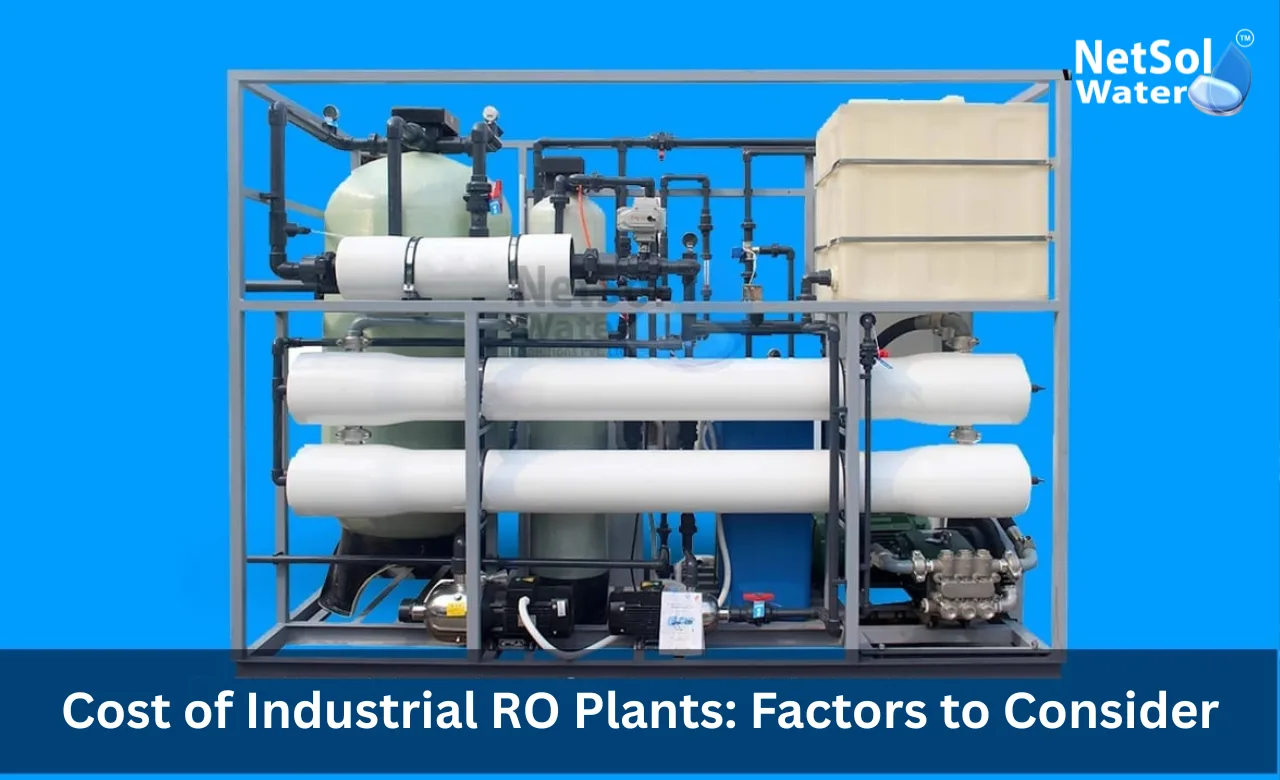
Cost of Industrial RO Plants: Factors to Consider
Industrial water reuse and treatment shape how factories run and how communities grow. India has many industrial hubs, and it is known for large-scale manufacturing and rapid urban growth. This growth pushes the need for clean water solutions. Netsol Water is the leading Industrial RO Plant Manufacturer, and it helps industries get reliable water treatment that fits their budget and needs. We will explore the main cost drivers for industrial RO plants.
Capital Costs and Installation
Capital cost decides how fast a project moves and what technology the plant will use. Let us have a look on some key items that influence capital cost and installation.
Equipment and Membrane Costs
Membranes and pressure vessels form the heart of an RO plant. Membranes remove dissolved salts and they need quality manufacture to last. High quality membranes cost more up front but they reduce the need for frequent replacement. Pumps and high pressure skids add to the price. Pretreatment units such as sand filters and cartridge filters also add to the bill. When you plan you must match membrane type to feed water quality and to required product water. Feed water with high hardness or heavy fouling leads to higher membrane and pretreatment cost. Choosing the right membrane chemistry and element length can cut energy use and reduce the number of pressure vessels. Controls and automation bring extra cost yet they make plant operation simpler. A reliable RO Plant Manufacturer will show you options and give clear life cycle cost numbers so you can compare upfront cost versus long term savings.
Installation and Civil Works
Installation and civil works make up a large share of initial project cost. Site work includes concrete pads pipe routing and safe access for pumps and tanks. Electrical panels and cabling must match the plant load. A good layout reduces piping length and it reduces head loss which helps lower energy cost later. Shipping, packing, and crane lift costs vary with location and facility size. Skilled technicians must commission the plant and this work takes time and planning. Planning for spare parts storage and for easy replacement of membranes reduces future downtime. When you plan installation keep a clear schedule and include buffer for local approvals and for unforeseen site constraints. This care lowers the chance of cost overrun and speeds up the date when your plant starts to produce water.
Operating Costs and Maintenance
Operating cost decides how much the plant will cost each month and it shapes the real value of the initial investment. Let us have a look on some common cost items that affect long term budgets.
Energy Consumption and Chemical Use
Energy makes up a large portion of monthly cost for an RO plant. High-pressure pumps run continuously, and they draw most of the electricity. System design affects energy use. Lower feed pressure and better pump efficiency cut power draw. Energy recovery devices can help for very large plants but they add to capital cost. Chemicals used for cleaning and for pretreatment also add to monthly bills. Antiscalants and cleaning agents protect membranes and they extend membrane life. Monitoring and dosing systems help use the right amount of chemical and they reduce waste. If feed water quality changes often then energy and chemical use can rise. An RO Plant Manufacturer should provide energy models and expected chemical consumption for your site so you know the cost per cubic meter of treated water.
Operation and Maintenance Practices
Good operation and clear maintenance planning keep the plant running and they lower unplanned expense. Routine checks and log keeping reveal trends so you can act before a problem grows. Membrane cleaning frequency depends on fouling and on how well pretreatment works. Replacing membranes on a planned schedule prevents a sudden drop in production and it keeps energy use stable. Spare part lists and onsite stock reduce downtime when parts wear out. Training for plant staff keeps startups and shutdowns safe and quick. Remote support and simple controls let technicians spot faults early. A dependable RO Plant Manufacturer will help set a maintenance plan and offer spare parts packages. This partnership keeps monthly cost predictable and it protects the plant yield over years.
Read some interesting information for Commercial RO Plant Manufacturer
Conclusion
Selecting an RO Plant Manufacturer shapes project cost and long term value. Good design and steady operation reduce both capital and operating costs. Netsol Water is the leading RO Plant Manufacturer and it can guide you from initial estimate to full scale operation. Contact us to discuss your water needs and to request a consultation. Our team will work through budgets layouts and expected running cost so you can make a clear plan.
Contact Netsol Water at:
Phone: +91-9650608473
Email: enquiry@netsolwater.com
